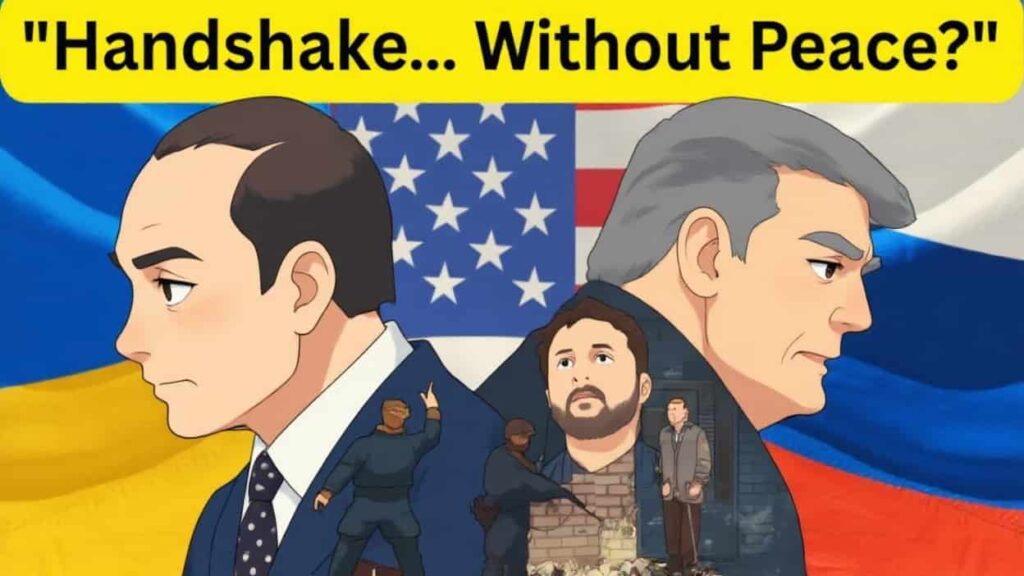The highly anticipated Trump Putin Ukraine deal fell apart during the recent Alaska summit, leaving global observers questioning the direction of international diplomacy. Despite extended private discussions, the two leaders could not agree on a framework that addressed both Ukraine’s sovereignty and Russia’s strategic interests.
The summit, which was expected to ease tensions, instead ended in a stalemate. U.S. officials revealed that President Trump sought to present himself as a peacemaker, while President Putin aimed to extract concessions on NATO’s presence in Eastern Europe. Neither side was willing to bend, resulting in a handshake without substance.
Table of Contents
Reactions to the Trump Putin Ukraine Deal Failure
The collapse of the Trump Putin Ukraine deal drew swift reactions from politicians and analysts worldwide. Ukrainian President Volodymyr Zelensky expressed deep concern, emphasizing that “Ukraine cannot be used as a bargaining chip.” NATO officials also warned that the breakdown of negotiations could embolden Russia to intensify its operations in Eastern Ukraine.
American lawmakers across party lines criticized the outcome, arguing that the U.S. failed to secure tangible progress. Senator Mark Warner stated, “What we saw was a photo opportunity without results, leaving Ukraine exposed and vulnerable.”
Why the Trump Putin Ukraine Deal Matters

The failure of the Trump Putin Ukraine deal carries far-reaching implications for global security. Analysts suggest that the inability to reach a compromise risks prolonging the war and increasing instability in Eastern Europe. The stalemate also highlights the geopolitical divide between Washington and Moscow, underscoring the limits of high-level diplomacy when national security interests clash.
Strategically, the failed summit demonstrates that the Ukraine crisis cannot be resolved without broader international involvement. The U.S. sought to reduce its global burdens, while Russia pushed for recognition of its influence in former Soviet territories. Both approaches collided, leaving Ukraine caught in the middle.
What Comes Next After the Ukraine Deal Collapse?
While no breakthrough emerged, both sides hinted at continuing dialogue. Trump signaled that “the door isn’t closed” for future negotiations, while Putin reiterated Russia’s “red lines” in Ukraine. However, experts caution that the longer the stalemate persists, the higher the risk of escalation on the battlefield.
The world now watches closely as Ukraine braces for potential fallout from the failed talks. Without a credible Trump Putin Ukraine deal, the war is expected to drag on, reshaping global alliances and testing the resilience of NATO.
Frequently Asked Questions
What was the Trump Putin Ukraine deal?
The proposed agreement was meant to address the ongoing war in Ukraine, with discussions focused on sovereignty, NATO’s presence, and Russia’s security guarantees.
Why did the Trump Putin Ukraine deal fail?
The deal collapsed because neither side was willing to compromise. The U.S. refused to concede on NATO’s role in Eastern Europe, while Russia demanded recognition of its control over disputed territories.
How does the failure affect Ukraine?
Ukraine remains vulnerable, as the absence of a settlement prolongs the conflict and increases the risk of further Russian offensives.
What are the global consequences of the failed Trump Putin Ukraine deal?
The collapse deepens geopolitical divisions, weakens trust in U.S.-Russia diplomacy, and leaves NATO facing mounting pressure to support Ukraine militarily.
Will there be another attempt at a Trump Putin Ukraine deal?
Both Trump and Putin suggested talks could continue, but analysts doubt significant progress unless major concessions are made on both sides.
Conclusion
The Trump Putin Ukraine deal was expected to be a turning point, but instead, it became a stark reminder of the complexity of international negotiations. With neither leader willing to compromise, the summit ended in symbolism rather than substance. The collapse of this agreement signals prolonged uncertainty, keeping Ukraine’s future hanging in the balance.
For more updates on global geopolitics and international affairs, visit www.documentarytimes.com.